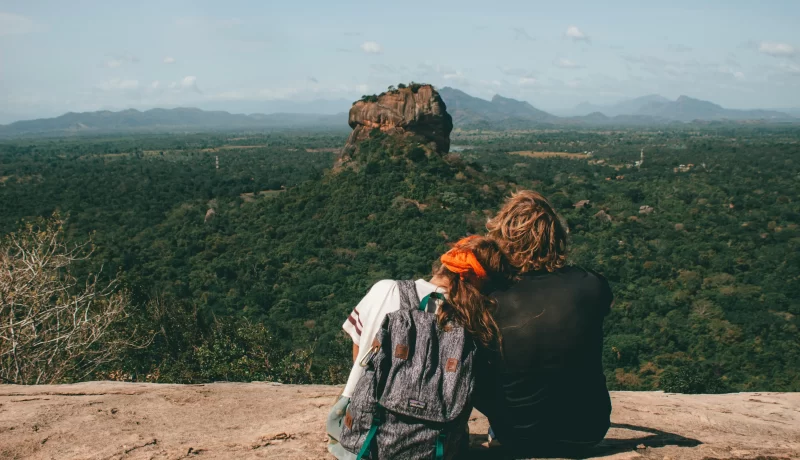
Sigiriya Rock Sri Lanka – 10 Incredible Reasons to Visit This Majestic Wonder
🏞️ Introduction
Why Sigiriya Rock Sri Lanka is a Must-Visit Landmark
Rising majestically in the heart of Sri Lanka, Sigiriya Rock Sri Lanka is one of the most breathtaking and historically significant landmarks in Asia. Also known as Lion Rock, this ancient fortress stands 200 meters above the surrounding jungle, offering panoramic views and a glimpse into Sri Lanka’s rich past.
Table Of Content
- 🏞️ Introduction
- Why Sigiriya Rock Sri Lanka is a Must-Visit Landmark
- 📌 Key Takeaways
- 1️⃣ What is Sigiriya Rock Sri Lanka?
- A Majestic Fortress in the Heart of Sri Lanka
- A Fortress, A Palace, and A Masterpiece of Urban Planning
- Why is Lion Rock Sri Lanka One of the Most Visited Landmarks in Sri Lanka?
- UNESCO World Heritage Site Status
- 2️⃣ The History & Mystery of Sigiriya (400 words)
- A Royal Palace Built in Betrayal and Fear
- Myth vs. Reality: Was Sigiriya a Monastery Before Kashyapa?
- The Mystery of Sigiriya: A Lost City in the Sky
- 3️⃣ The Lion Rock: Why Is It Called That?
- A Monumental Entrance – The Lion’s Paws
- What Happened to the Lion’s Head?
- The Symbolic Meaning of the Lion in Sri Lankan Culture
- 4️⃣ How Old is Sigiriya?
- 5️⃣ 🌄 Climbing Sigiriya & Travel Tips
- How Hard Is It to Climb Sigiriya Rock?
- 6️⃣ Sigiriya Rock Steps – What to Expect?
- The climb divided into sections
- Narrow staircases and the steep final ascent
- Handrails & safety measures for climbers
- 7️⃣ Sigiriya Entrance Fee & Opening Hours
- 💰 Entrance Fee for Locals and Foreigners
- ⏰ Best Time of Day to Visit for Fewer Crowds
- 🎟️ Discounted Tickets for Children and Locals
- 📅 Sigiriya Opening Hours
- 8️⃣ Best Time to Visit Sigiriya Rock
- ☀️ Weather Conditions – Best and Worst Seasons
- 🌅 Morning vs. Afternoon Climb – Pros and Cons
- 🌅 Why Sunset at Pidurangala Rock is a Great Alternative
- 9️⃣ What to Wear & What to Bring to Sigiriya
- 👟 Best Shoes for Climbing Sigiriya
- 👕 Light Clothing, Water, and Other Essentials
- 👨👩👦 Is It Suitable for Kids and Elderly Visitors?
- 9️⃣ What to Wear & What to Bring to Sigiriya
- Best Shoes for Climbing Sigiriya
- Light Clothing, Water, and Other Essentials
- Is It Suitable for Kids and Elderly Visitors?
- 🔟 Sigiriya Rock vs. Pidurangala Rock – Which One to Climb?
- Comparison of Views, Difficulty, and Experience
- Pidurangala’s Cheaper Entrance Fee and Alternative Hike
- Which Rock is Better for Photography?
- Final Verdict: Which One Should You Climb Sigiriya?
- Sigiriya Photos
- Bonus Tip
- 📸 Sigiriya Rock Sri Lanka Photos & Travel Inspiration
- FAQs About Sigiriya Rock Sri Lanka
- 📌 Where in Sri Lanka is Sigiriya Rock?
- 📌 What is Sigiriya Rock Famous For?
- 📌 How Hard is it to Climb Sigiriya Rock?
- 📌 Is Sigiriya Scary to Climb?
- 📌 What is the Secret of Sigiriya?
- 📌 What to Wear in Sigiriya Rock?
- 📌 How Much Does Sigiriya Cost?
- 📌 What Time is Best to Climb Sigiriya?
- 📌 Is it Worth Climbing Sigiriya Rock?
- 📌 Can Kids Climb Sigiriya?
- Conclusion: Why Sigiriya Rock Sri Lanka is a Must-Visit Destination
Built in the 5th century by King Kashyapa, Sigiriya was once a royal palace and later became a Buddhist monastery. Today, it is a UNESCO World Heritage Site and attracts thousands of visitors each year who are eager to explore its frescoes, mirror wall, and legendary lion’s paws.
Climbing Sigiriya Rock is both a challenge and a reward. The 1,200 steps lead to the summit, where ruins of an ancient kingdom await, surrounded by lush gardens and breathtaking landscapes. For history lovers, adventure seekers, and photographers alike, this iconic rock is a must-visit destination in Sri Lanka.
Whether you’re fascinated by ancient civilizations or simply want to experience one of the best views in the country, Lion Rock Sri Lanka should be at the top of your travel list!
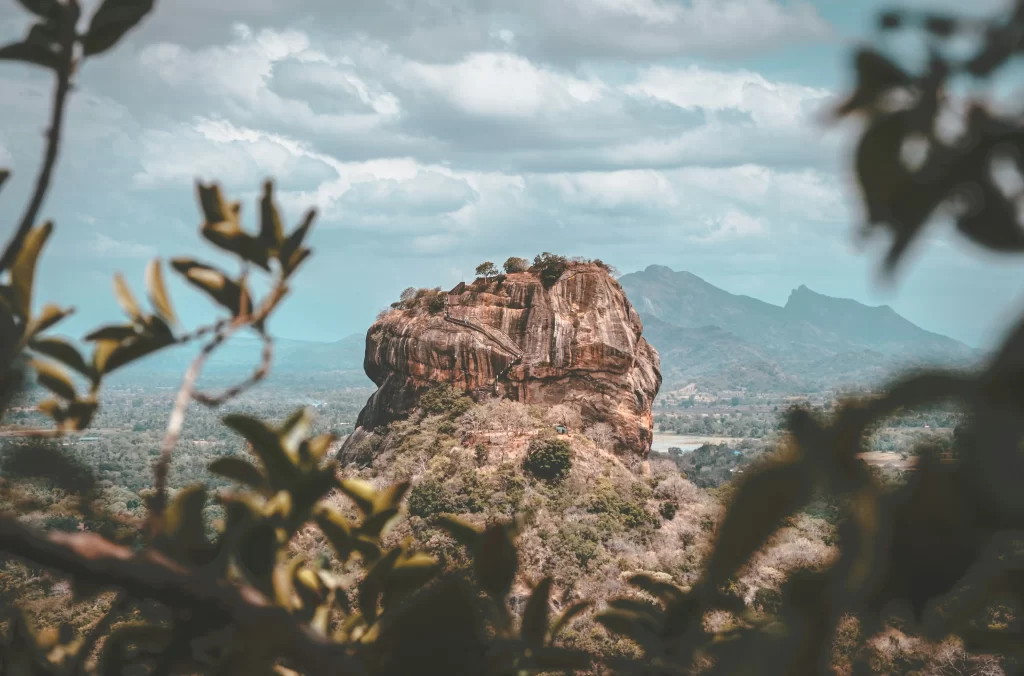
📌 Key Takeaways
- Sigiriya Rock Sri Lanka is an ancient rock fortress and a UNESCO World Heritage Site.
- Also known as Lion Rock, it was built by King Kashyapa in the 5th century.
- Visitors must climb 1,200 steps to reach the top, offering breathtaking views.
- The site is famous for its stunning frescoes, mirror wall, and the lion’s paws.
- Entrance fee, climbing difficulty, and the best time to visit are key factors to consider.
- Pidurangala Rock, located nearby, is a great alternative climb with a cheaper entrance fee and stunning sunrise views.
Sigiriya Rock
📜 History & Significance of Sigiriya Rock Sri Lanka
1️⃣ What is Sigiriya Rock Sri Lanka?
A Majestic Fortress in the Heart of Sri Lanka
Sigiriya Rock Sri Lanka is one of the most iconic and historically significant landmarks in the country. Often referred to as Lion Rock, this ancient rock fortress towers 200 meters (660 feet) above the surrounding jungle, offering a fascinating glimpse into Sri Lanka’s rich past.
Located in the Matale District, near Dambulla, Sigiriya is not just a natural wonder but a man-made marvel. It is a 5th-century palace and fortress built by King Kashyapa (477–495 AD), who transformed this massive rock into an impenetrable citadel. Today, it is recognized as a UNESCO World Heritage Site, drawing history lovers, adventurers, and photographers from around the world.
A Fortress, A Palace, and A Masterpiece of Urban Planning
Sigiriya is much more than just a rock; it is a carefully designed royal palace complex, featuring:
- A sophisticated water and garden system – Advanced hydraulic engineering allowed for fountains, reservoirs, and canals to function efficiently.
- A defensive fortress – Built high above the ground, it provided protection from invasions.
- Frescoes and artwork – The famous Sigiriya frescoes of celestial maidens, which still survive today, reflect the artistic brilliance of ancient Sri Lanka.
- The Mirror Wall – A polished rock surface where ancient inscriptions and graffiti from visitors can still be seen.
- The Lion’s Paws Entrance – The main gateway to the summit, originally a massive lion-shaped structure, is now represented by two giant paws.
Why is Lion Rock Sri Lanka One of the Most Visited Landmarks in Sri Lanka?
Sigiriya attracts thousands of visitors each year for several reasons:
- Historical Significance – It is a well-preserved site showcasing Sri Lanka’s ancient architecture, art, and engineering.
- Cultural Importance – Recognized by UNESCO as a World Heritage Site, it stands as a symbol of Sri Lanka’s rich history.
- Breathtaking Views – A climb to the summit rewards visitors with stunning panoramic views of lush greenery and distant hills.
- Mystery and Legends – The story of King Kashyapa, who allegedly built Sigiriya after murdering his father, adds a layer of intrigue.
UNESCO World Heritage Site Status
In 1982, Sigiriya Rock Sri Lanka was designated a UNESCO World Heritage Site for its unique combination of urban planning, landscaping, and ancient architecture. UNESCO describes it as one of the best-preserved examples of ancient city planning, making it an invaluable cultural and historical treasure.
2️⃣ The History & Mystery of Sigiriya (400 words)
A Royal Palace Built in Betrayal and Fear
Sigiriya Rock Sri Lanka is more than just an ancient fortress; it is a monument shrouded in history, power, and mystery. Built in the 5th century AD by King Kashyapa (477–495 AD), Sigiriya’s origins are deeply rooted in royal betrayal and political turmoil.
Kashyapa, the son of King Dhatusena, seized the throne after murdering his father. Fearing revenge from his half-brother Moggallana, the rightful heir, Kashyapa moved the capital from Anuradhapura to Sigiriya. He transformed the towering rock into an impregnable fortress-palace, complete with elaborate gardens, water reservoirs, and hidden tunnels.
Despite his efforts to fortify his kingdom, Kashyapa’s rule was short-lived. In 495 AD, Moggallana returned from exile with an army and defeated Kashyapa in battle. The defeated king, abandoned by his own troops, took his own life. With his death, Sigiriya lost its royal status and was abandoned as a palace.
Myth vs. Reality: Was Sigiriya a Monastery Before Kashyapa?
While Kashyapa is credited with building the grand palace and Sigiriya fortress, some historical and archaeological evidence suggests that Sigiriya was inhabited long before his reign.
- Prehistoric Settlements – Excavations have found evidence of human settlements dating back to the 3rd century BC, indicating that Buddhist monks may have used Sigiriya as a monastery long before it became a royal citadel.
- Cave Inscriptions – Several ancient Brahmi inscriptions found in nearby caves suggest that Buddhist monks had established a monastic retreat here as early as the 1st century BC.
- Post-Kashyapa Era – After Kashyapa’s fall, Sigiriya is believed to have been reclaimed by Buddhist monks, who used it as a place of meditation for several centuries.
The Mystery of Sigiriya: A Lost City in the Sky
The true purpose of Sigiriya is still debated among historians and archaeologists. Was it purely a fortress, or did Kashyapa also design it as a symbol of divine power? Some theories suggest that the layout of Sigiriya aligns with celestial patterns, reinforcing the belief that it may have had spiritual significance.
Regardless of its origins, Sigiriya Rock Sri Lanka remains a masterpiece of ancient engineering, art, and legend, making it one of the most intriguing historical sites in the world.
3️⃣ The Lion Rock: Why Is It Called That?
A Monumental Entrance – The Lion’s Paws
One of the most striking features of Sigiriya Rock Sri Lanka is its massive lion-shaped gateway, which gives it the name “Lion Rock.” As visitors ascend to the final stage of the climb, they are greeted by two colossal lion’s paws, carved into the rock at the entrance to the summit.
Originally, this entrance was designed to resemble a gigantic sitting lion, with a grand head and forepaws. To enter the upper palace, visitors had to walk through the lion’s mouth, creating an imposing and awe-inspiring experience. This unique architectural feature set Sigiriya apart from other fortresses of the time and symbolized royalty, strength, and power.
Unfortunately, today, only the massive stone paws remain, as the lion’s head and upper body have long since crumbled due to erosion and time. Despite this, the sheer size and craftsmanship of the remaining paws continue to leave visitors in awe, offering a glimpse into the grand vision of King Kashyapa’s fortress-palace.
What Happened to the Lion’s Head?
The lion’s head and upper body were likely made of brick and plaster, which proved less durable than the solid rock base. Over the centuries, exposure to harsh weather conditions, monsoon rains, and natural decay led to its gradual collapse. Today, only the paws and part of the lower structure remain, leaving historians and archaeologists to speculate on its original full appearance.
Despite its ruined state, historical records and ancient drawings suggest that the lion was once an impressive, towering structure, meant to intimidate enemies and impress visitors. Its remains still serve as a testament to the architectural ingenuity of ancient Sri Lankan builders.
The Symbolic Meaning of the Lion in Sri Lankan Culture
The lion has long been a powerful symbol in Sri Lankan history and culture. Even today, the lion emblem is prominently featured on the national flag of Sri Lanka, representing bravery, sovereignty, and strength.
- Royal Symbolism: Lions were often associated with royal power and divine authority, and King Kashyapa’s decision to incorporate a lion gateway reflected his desire to be seen as a formidable ruler.
- Buddhist Influence: In Buddhist culture, lions symbolize protection and enlightenment, making them a common motif in ancient temples and monasteries.
- Strategic Design: The lion-shaped entrance was not only symbolic but also served as a defensive structure, making the upper fortress more difficult to access for invaders.
4️⃣ How Old is Sigiriya?
Sigiriya Rock Sri Lanka is believed to be over 5,000 years old, with evidence of prehistoric human activity dating back to the Mesolithic period (around 3,000 BC). While the famous fortress and palace were built in the 5th century AD by King Kashyapa, archaeological findings suggest that the site was inhabited long before it became a royal citadel.
archaeological evidence of settlements dating back to prehistoric times
Excavations around Sigiriya have uncovered signs of prehistoric settlements, proving that this site was used by early humans long before recorded history. The discovery of stone tools, cave dwellings, and burial sites suggests that Sigiriya was home to hunter-gatherer communities as early as 3,000 BC.
By the 3rd century BC, Buddhist monks had established monasteries in the caves surrounding Sigiriya, as indicated by Brahmi inscriptions found in several rock shelters. These inscriptions confirm that Sigiriya served as a religious retreat for centuries before King Kashyapa transformed it into his palace.
how the rock fortress evolved over the centuries
The most well-known phase of Sigiriya’s history began in the 5th century AD, when King Kashyapa chose this towering rock as the site for his fortress and royal residence. He commissioned the construction of gardens, pools, frescoes, and the famous lion-shaped gateway, turning Sigiriya into a remarkable urban complex.
After Kashyapa’s death in 495 AD, Sigiriya was abandoned as a royal palace and was once again occupied by Buddhist monks. It remained a monastic site for several centuries until it was finally deserted. Over time, nature reclaimed the area, and the once-glorious rock fortress faded into obscurity.
Sigiriya was rediscovered by British explorers in the 19th century, and since then, extensive archaeological work has been carried out to uncover its hidden history and architectural wonders. Today, it stands as one of Sri Lanka’s most important historical and cultural landmarks.
comparison to other ancient sites in sri lanka
Compared to other ancient sites in Sri Lanka, Sigiriya is unique in its design, purpose, and strategic location. While Anuradhapura and Polonnaruwa served as capitals for many kings over the centuries, Sigiriya was a short-lived but extraordinary royal city, built entirely on top of a massive rock.
Unlike the temples and monasteries of Dambulla or Mihintale, Sigiriya was both a palace and a fortress, making it one of the most distinctive and ambitious architectural achievements of ancient Sri Lanka. Its combination of art, engineering, and urban planning makes it one of the best-preserved examples of ancient city design in the world.
5️⃣ 🌄 Climbing Sigiriya & Travel Tips
How Hard Is It to Climb Sigiriya Rock?
1,200+ steps to the summit
Climbing Sigiriya Rock Sri Lanka is a moderate to challenging hike, with over 1,200 steps leading to the top. The entire climb takes 30 to 45 minutes for an average person, though it may take longer depending on fitness level and breaks. The pathway includes narrow staircases, steep inclines, and exposed sections, making the ascent both exciting and demanding.
The climb is divided into sections, with multiple resting points where visitors can pause, take photos, and admire the view. The first part of the climb leads through the lower gardens, followed by a series of steep metal staircases attached to the rock face. The final ascent, past the Lion’s Paws, is the most challenging, but it rewards climbers with breathtaking 360-degree views from the summit.
The climb is steep but manageable for most visitors
While Sigiriya Rock may seem intimidating, it is manageable for most visitors, including children and older travelers in good health. Handrails and safety measures are in place to assist climbers, and there are several shaded areas where people can rest.
However, those with fear of heights, mobility issues, or breathing difficulties may find certain sections challenging, particularly the exposed staircases on the rock face. During peak hours, the climb can also become crowded, which may slow progress and make the ascent feel more difficult.
To make the climb easier:
- Start early in the morning (before 9 AM) to avoid the heat and crowds.
- Wear comfortable shoes with good grip.
- Take short breaks at resting points to stay hydrated.
- Be cautious on steep staircases and hold onto handrails.
Alternative option: Pidurangala Rock climb for an easier hike
For those looking for an easier and less crowded alternative, Pidurangala Rock is a great option. Located just a few kilometers from Sigiriya, Pidurangala offers:
- A shorter and less strenuous hike (about 30 minutes to the top).
- A fraction of the entrance fee compared to Sigiriya.
- A stunning view of Sigiriya Rock itself, making it ideal for photographers.
Unlike Sigiriya, Pidurangala has fewer staircases and a more natural rock path, though the final part of the climb involves a small rock scramble. If you’re unable to climb Sigiriya or simply want an alternative experience, Pidurangala is a fantastic option.
While Sigiriya Rock Sri Lanka is a must-visit for its Sigiriya history and architecture, Pidurangala is perfect for those who want a scenic viewpoint with fewer crowds. For the best experience, many visitors climb Pidurangala for sunrise and Sigiriya for sunset, enjoying the best of both worlds.
6️⃣ Sigiriya Rock Steps – What to Expect?
The climb divided into sections
The Sigiriya Rock Sri Lanka climb is divided into several sections, each offering a unique experience. The first section begins with a walk through the lower gardens, followed by a gentle incline leading to the base of the rock. From here, the climb becomes steeper as visitors ascend through a series of stone and metal staircases carved into the rock face.
At the midway point, climbers reach the Mirror Wall and the famous frescoes, where they can take a short break before continuing the ascent. The next stage leads to the Lion’s Paws, a breathtaking entrance that marks the final stretch to the summit.
Narrow staircases and the steep final ascent
The last part of the climb is the most challenging, featuring a steep and narrow staircase built along the rock’s vertical face. This exposed section can be intimidating for those afraid of heights, but the views along the way are spectacular.
Handrails & safety measures for climbers
To ensure safety, metal railings and handrails have been installed along the steepest sections of the climb. While the steps can be slippery after rain, climbers can safely reach the top by holding onto the handrails and taking their time.
7️⃣ Sigiriya Entrance Fee & Opening Hours
💰 Entrance Fee for Locals and Foreigners
Visiting Sigiriya Rock Sri Lanka requires purchasing an entry ticket, with different prices for locals and international tourists. As of the latest update, the entrance fees are:
- Foreign visitors: 💵 $30 (USD) per person
- SAARC country visitors (India, Pakistan, Bangladesh, etc.): 💵 $15 (USD) per person
- Sri Lankan citizens: 🇱🇰 LKR 100 per person
- Sri Lankan students and school children: 🎒 LKR 50 per person
- Children under 6 years: 👶 Free entry
These fees grant access to the entire Sigiriya site, including the gardens, frescoes, Lion’s Paws, and summit ruins. Tickets can be purchased at the entrance gate or online through official Sri Lanka tourism websites.
⏰ Best Time of Day to Visit for Fewer Crowds
Sigiriya is one of Sri Lanka’s most visited landmarks, which means it can get very crowded, especially during peak tourist season. To avoid crowds and the intense midday heat, the best times to visit are:
- Early morning (7:00 AM – 9:00 AM) 🌅 – Ideal for a cooler and less crowded climb.
- Late afternoon (3:00 PM – 5:00 PM) 🌇 – Offers beautiful golden-hour lighting and a pleasant breeze at the summit.
Midday (10:00 AM – 2:00 PM) can be extremely hot and busy, making the climb more difficult. If you plan to visit during this time, bring plenty of water, sunscreen, and a hat.
🎟️ Discounted Tickets for Children and Locals
For those traveling with families or on a budget, discounted tickets are available:
- Children under 6 years can enter for free.
- Sri Lankan school students get reduced ticket prices (LKR 50).
- SAARC country visitors (India, Nepal, Bhutan, etc.) receive a 50% discount on ticket prices.
Additionally, locals and students are encouraged to visit on weekdays when the crowds are smaller. Discounts may also apply for group tours and educational visits.
📅 Sigiriya Opening Hours
⏳ Sigiriya Rock is open daily from 7:00 AM to 5:30 PM, with last entry at 5:00 PM. To make the most of your visit, arrive early to experience the cool morning air and stunning sunrise views over the jungle.
Planning your visit around these timings and ticket options will help you have the best experience exploring Sigiriya Rock Sri Lanka! 🚶♂️🌄
8️⃣ Best Time to Visit Sigiriya Rock
☀️ Weather Conditions – Best and Worst Seasons
The best time to visit Sigiriya Rock Sri Lanka is during the dry season from December to April. This period offers clear skies, comfortable temperatures, and better visibility, making the climb much easier and more enjoyable.
The monsoon season (May to November) brings heavy rain, strong winds, and slippery stairs, making the climb more dangerous. While the landscape becomes lush and green, climbing in the rain is not ideal, and views from the top can be obstructed by mist and clouds.
Best months to visit:
✅ December – April: Ideal weather, dry trails, and clear views.
✅ June – August: Occasional rain but still manageable for climbing.
Worst months to visit:
❌ May and October – November: Heavy monsoon rains can make the climb risky.
🌅 Morning vs. Afternoon Climb – Pros and Cons
Morning Climb (7:00 AM – 9:00 AM) 🌄
✅ Cooler temperatures make the climb easier.
✅ Fewer crowds in the early hours.
✅ Best lighting for photography in the morning.
❌ Can be foggy in some months, reducing visibility.
Afternoon Climb (3:00 PM – 5:00 PM) 🌇
✅ Warmer lighting makes the landscape glow.
✅ Smaller crowds after 3 PM compared to midday.
✅ Breezier conditions on the summit.
❌ Hot and humid between 12:00 PM – 2:00 PM.
❌ Less time to explore before closing at 5:30 PM.
🌅 Why Sunset at Pidurangala Rock is a Great Alternative
If you want a breathtaking sunset view of Sigiriya, consider Pidurangala Rock instead. Located just a few kilometers away, Pidurangala offers:
- A cheaper entry fee (LKR 500 vs. $30 for Sigiriya).
- A shorter, easier climb (about 30 minutes).
- The best panoramic view of Sigiriya Rock at sunset.
Many travelers climb Sigiriya in the morning and hike Pidurangala in the evening for the best experience of both locations.
9️⃣ What to Wear & What to Bring to Sigiriya
👟 Best Shoes for Climbing Sigiriya
Wearing the right footwear is essential for a safe and comfortable climb. The best shoes for Sigiriya are:
✅ Hiking shoes with good grip.
✅ Comfortable sneakers with non-slip soles.
✅ Breathable sports shoes for comfort.
Avoid:
❌ Flip-flops and sandals – can be dangerous on steep steps.
❌ High heels or dress shoes – not suitable for climbing.
👕 Light Clothing, Water, and Other Essentials
Since Sigiriya is in a tropical climate, it’s important to dress appropriately:
✅ Light, breathable clothing – Cotton or sportswear to keep cool.
✅ A hat or cap – Protection from the sun.
✅ Sunscreen – Essential for the exposed climb.
✅ Sunglasses – To reduce glare from the rock.
✅ A small backpack – To carry water, snacks, and essentials.
Hydration is key! Bring at least 1 liter of water per person, as there are no water refill stations on the way up.
👨👩👦 Is It Suitable for Kids and Elderly Visitors?
Sigiriya is manageable for children and elderly visitors, but some precautions should be taken:
✅ Kids over 6 years old can climb with supervision.
✅ Elderly visitors should take breaks and avoid peak heat hours.
✅ Resting points are available along the climb.
❌ Not recommended for toddlers or those with mobility issues, as the stairs are steep and narrow.
By wearing the right clothes, bringing enough water, and choosing the right time to climb, your Sigiriya experience will be much more enjoyable! 🚶♂️🌄
9️⃣ What to Wear & What to Bring to Sigiriya
Best Shoes for Climbing Sigiriya
Climbing Sigiriya Rock Sri Lanka involves 1,200+ steps, steep staircases, and uneven surfaces, so wearing the right shoes is crucial.
| Footwear Type | Recommended? | Reason |
|---|---|---|
| Hiking shoes | ✅ Yes | Best grip and ankle support for uneven surfaces. |
| Running shoes | ✅ Yes | Comfortable with good cushioning for long walks. |
| Sports sandals | ❌ No | Can slip on smooth stone surfaces and metal staircases. |
| Flip-flops | ❌ No | Unsafe for steep climbs, offer no support. |
| Dress shoes or heels | ❌ No | Not practical for hiking. |
Light Clothing, Water, and Other Essentials
Sri Lanka’s tropical climate makes light and breathable clothing the best option.
✅ What to Wear:
- Light cotton or moisture-wicking clothing (avoid thick fabrics).
- A hat or cap for sun protection.
- Sunglasses to reduce glare from the rock.
✅ What to Bring:
- Water (at least 1 liter per person) – No refill stations along the climb.
- Sunscreen – The rock is exposed, and the sun is intense.
- Small backpack – To carry essentials like snacks, water, and a camera.
- Camera or phone – For capturing breathtaking views at the top.
Is It Suitable for Kids and Elderly Visitors?
Sigiriya is manageable for most people, but there are some challenges for young children and the elderly.
✅ Suitable for:
- Kids over 6 years old with supervision.
- Elderly visitors in good health, as there are multiple resting points.
❌ Not recommended for:
- Toddlers or infants (the climb is too steep and narrow).
- People with severe mobility issues or fear of heights.
By choosing the right clothing and shoes and bringing essentials, you can have a safe and comfortable climb up Sigiriya Rock.
🔟 Sigiriya Rock vs. Pidurangala Rock – Which One to Climb?
Comparison of Views, Difficulty, and Experience
Both Sigiriya Rock and Pidurangala Rock offer unique experiences, and choosing between them depends on your budget, fitness level, and interest in history.
| Feature | Sigiriya Rock 🦁 | Pidurangala Rock 🌄 |
|---|---|---|
| Entrance Fee | 💵 $30 USD (foreigners) | 💵 $3 USD (locals & foreigners) |
| Climb Difficulty | 🏃 Moderate to Hard | 🚶 Easy to Moderate |
| Time to Summit | ⏳ 45-60 minutes | ⏳ 30 minutes |
| Historical Significance | ✅ Ancient fortress with frescoes, mirror wall, and Lion’s Paws. | ❌ No ruins, but has a Buddhist temple at the base. |
| Crowd Level | 🚶♂️ Very crowded (popular tourist spot). | 🚶♂️ Less crowded, more peaceful. |
| Best for Views | 🌅 360-degree panoramic views, but barriers limit movement. | 🌄 Wide unobstructed views of Sigiriya Rock. |
| Best for Sunrise/Sunset | ❌ No sunset view, gates close at 5:30 PM. | ✅ Best for sunrise/sunset, open longer. |
Pidurangala’s Cheaper Entrance Fee and Alternative Hike
One of Pidurangala’s biggest advantages is its affordable entrance fee. While Sigiriya costs $30, Pidurangala only costs around $3, making it a budget-friendly option for travelers.
The hike up Pidurangala is easier than Sigiriya’s 1,200-step climb, but the last 10 minutes involve rock scrambling, making it slightly challenging for some visitors.
Which Rock is Better for Photography?
If you want the best view of Sigiriya Rock itself, climb Pidurangala.
- Sigiriya Rock offers stunning summit views, but the restricted movement and crowds can limit photography opportunities.
- Pidurangala provides an unmatched panoramic view of Sigiriya from a distance, making it perfect for capturing the rock in all its glory.
Final Verdict: Which One Should You Climb Sigiriya?
- If you love history and ancient ruins, Sigiriya Rock is the best choice.
- If you want a budget-friendly, less crowded, and scenic climb, Pidurangala Rock is better.
- For the best experience, climb Sigiriya in the morning and Pidurangala for sunset to get the best of both worlds.
Both Sigiriya and Pidurangala offer unique experiences, and choosing the right one depends on what you want from your adventure! 🚶♂️🏞️
Sigiriya Photos
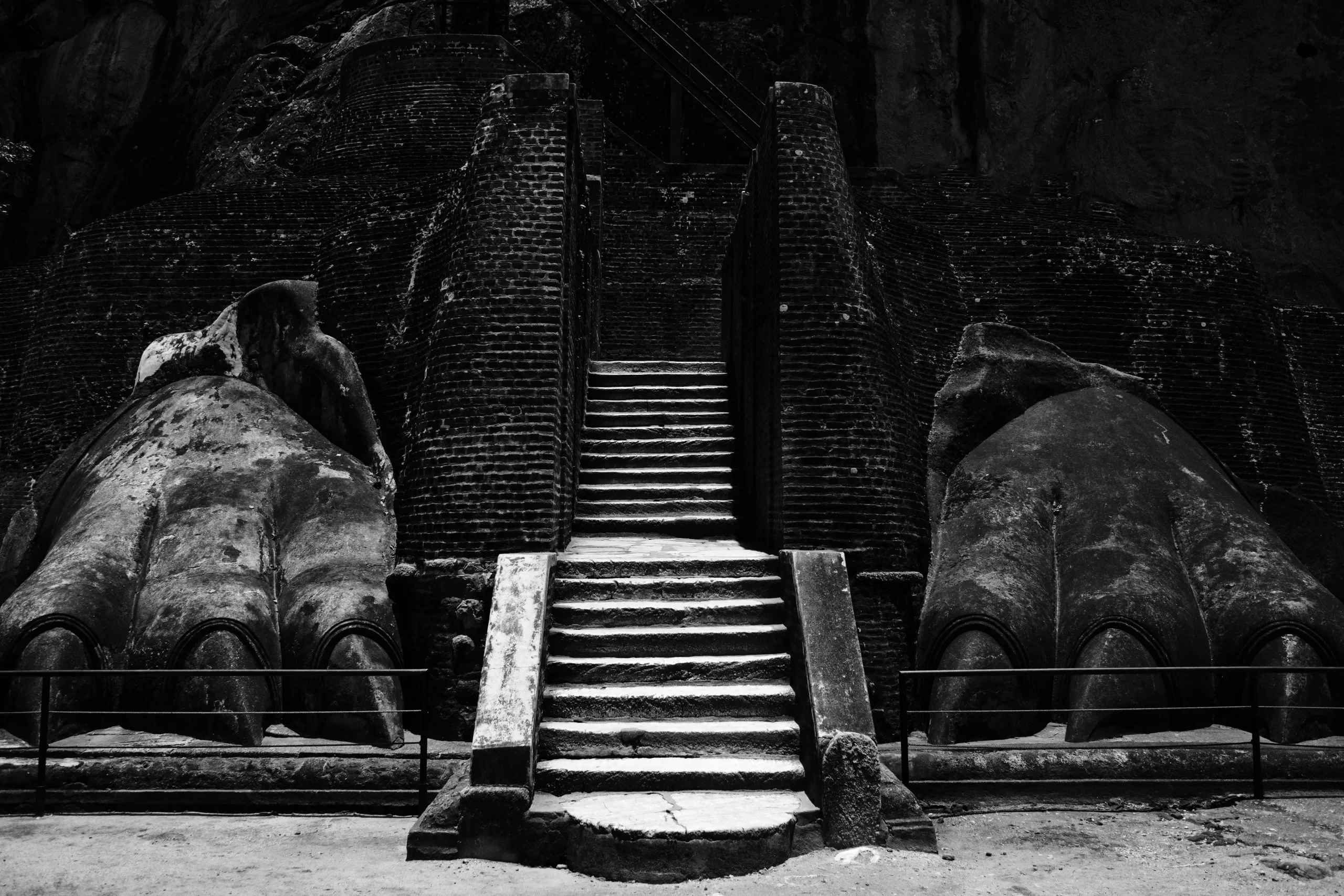
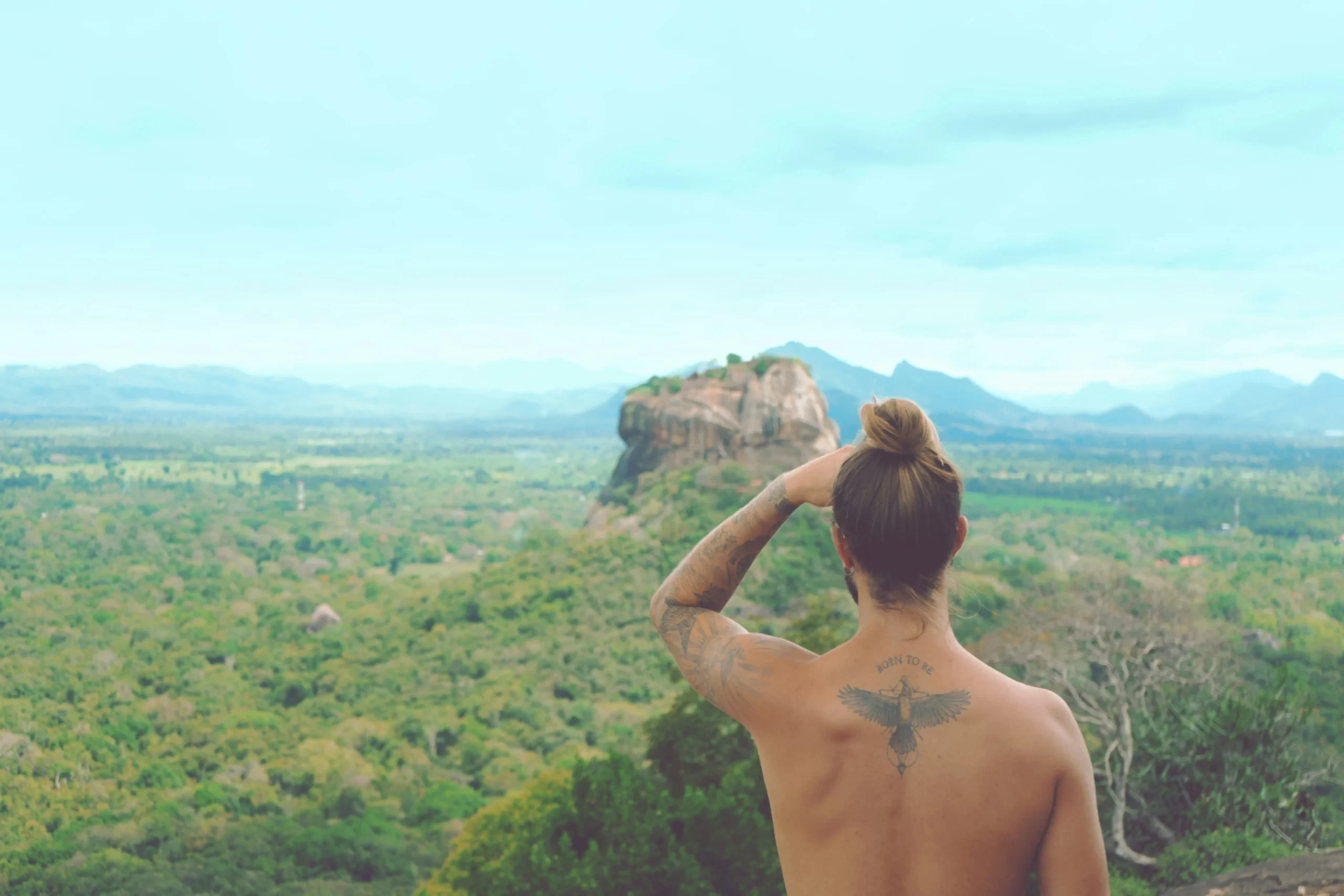
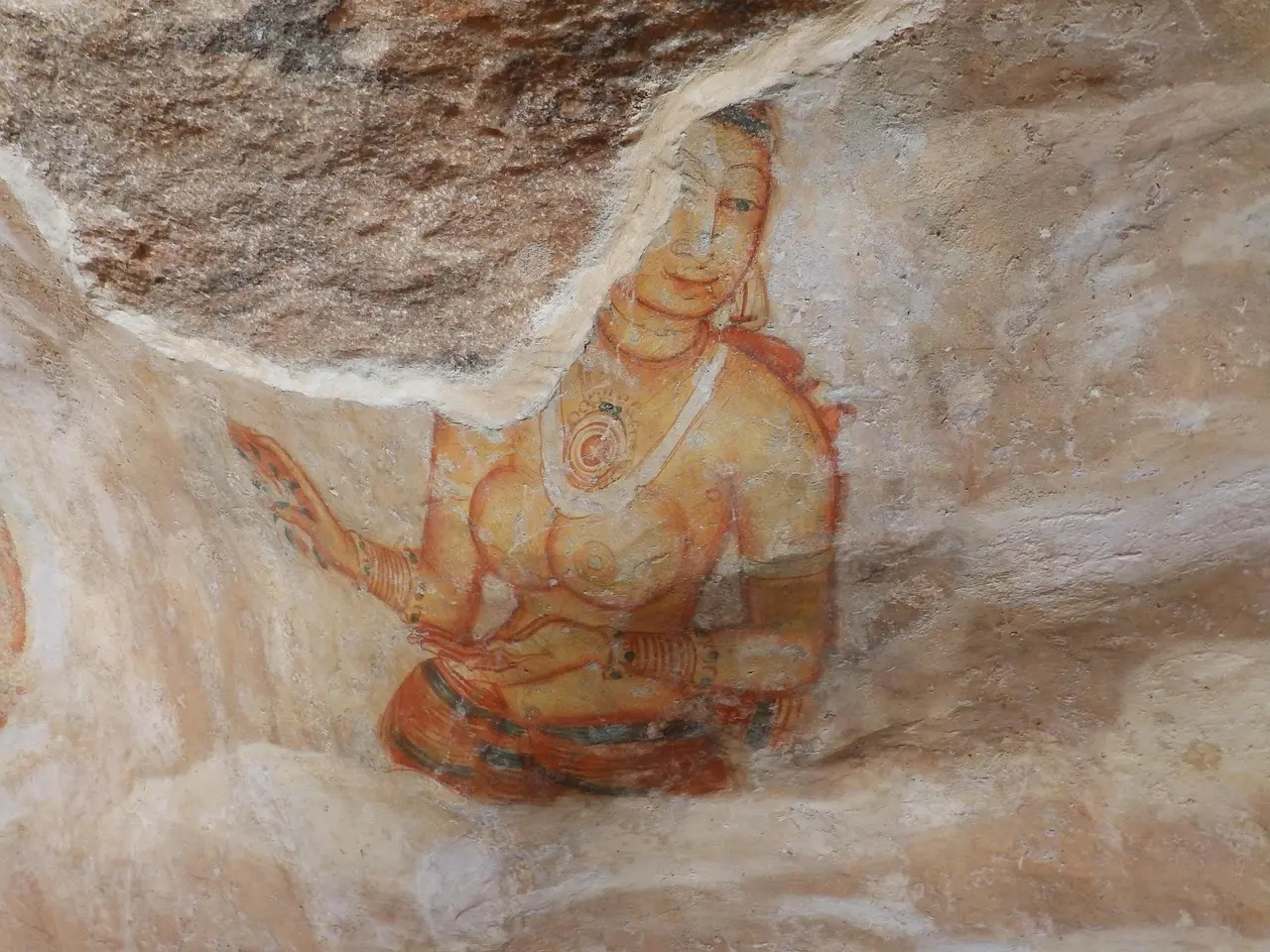
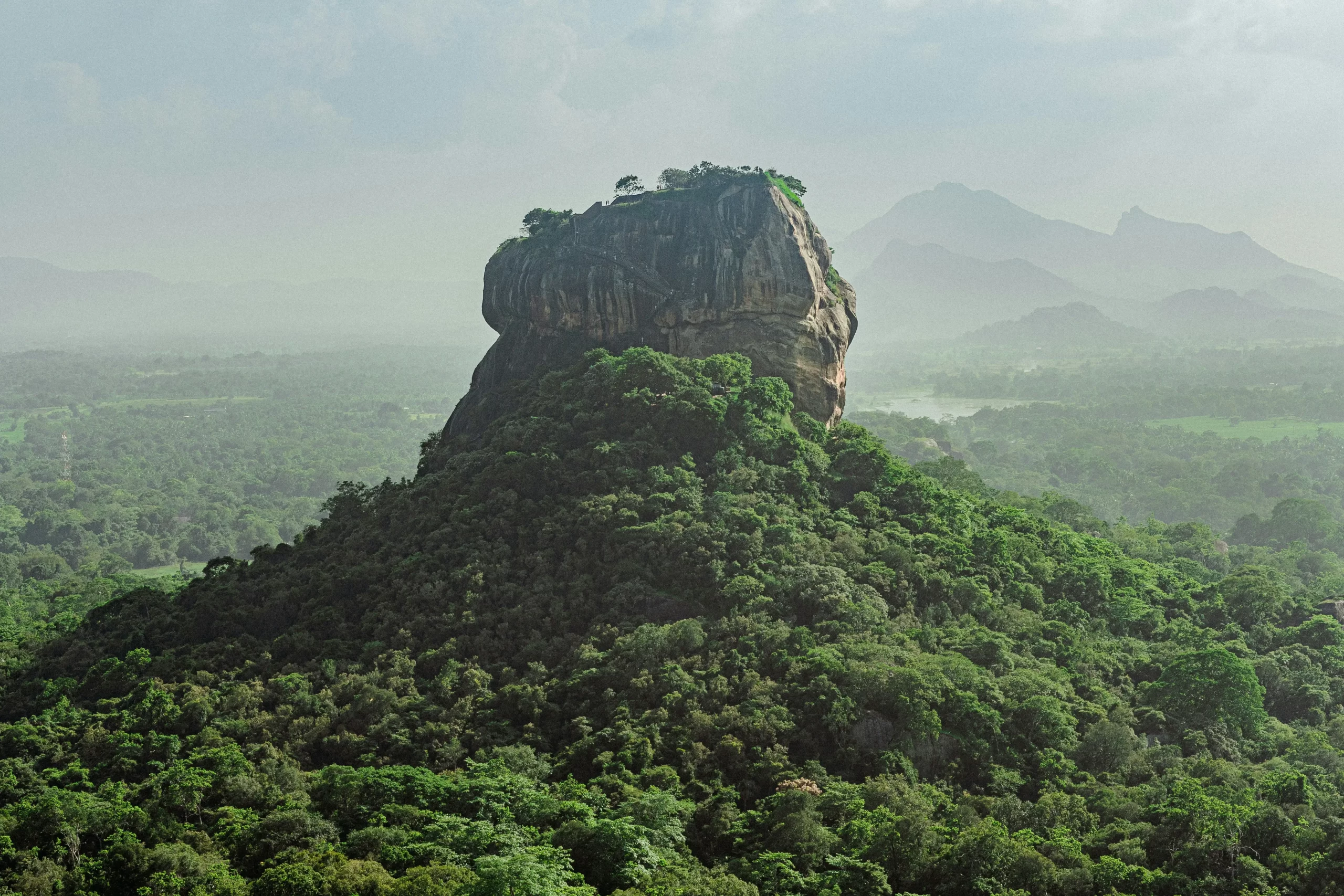
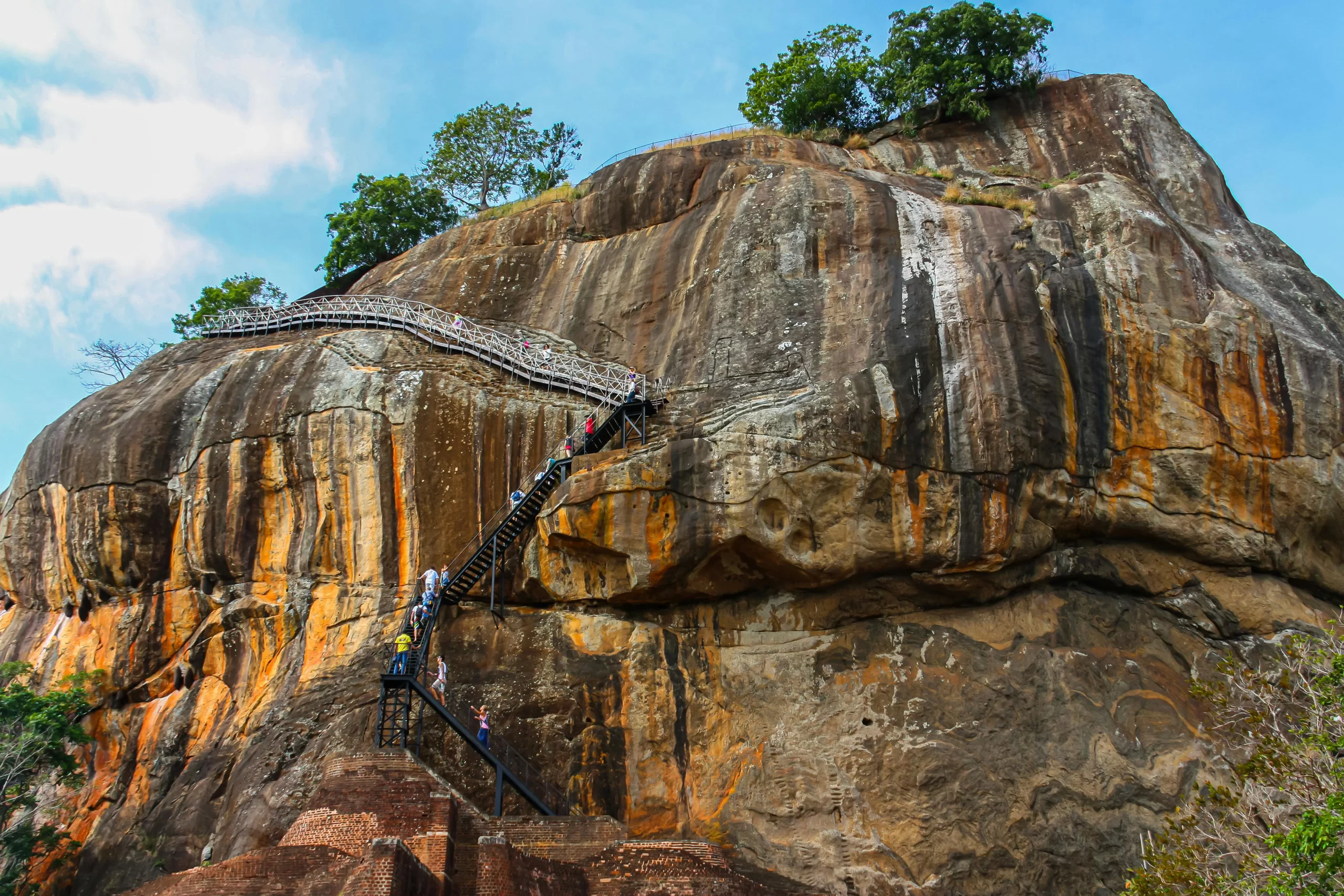
Bonus Tip
📸 Sigiriya Rock Sri Lanka Photos & Travel Inspiration
The Best Photography Spots in and Around Sigiriya
Sigiriya Rock Sri Lanka is one of the most photographed landmarks in the country, offering stunning landscape views, ancient ruins, and unique angles for photographers. Whether you’re using a professional camera or a smartphone, there are plenty of breathtaking spots to capture the beauty of Sigiriya.
Here are the top photography locations:
- The Base of Sigiriya Rock – Capture the majestic rock towering over the surrounding jungle from the gardens below. This shot emphasizes the sheer height and grandeur of the fortress.
- The Lion’s Paws Entrance – One of the most iconic photo spots! The massive stone-carved lion’s paws provide an epic framed shot of the staircase leading to the summit.
- The Mirror Wall & Frescoes – The ancient frescoes of Sigiriya are a must-photograph, but flash photography is not allowed to protect the paintings. The golden-hued Mirror Wall also makes for a unique reflective shot.
- The Summit Ruins – Once you reach the top, capture panoramic views of the ancient palace remains with the lush jungle stretching for miles below.
- Pidurangala Rock – For the best full view of Sigiriya Rock, climb Pidurangala Rock at sunrise or sunset. This is the most famous viewpoint for capturing the entire Sigiriya Rock Fortress from a distance.
Top Angles for Capturing the Lion’s Paws & Frescoes
📷 Best Angles for the Lion’s Paws:
- Stand directly in front of the Lion’s Paws to get a perfectly symmetrical shot.
- Use a wide-angle lens or your phone’s panorama mode to capture the entire staircase and entrance.
- Take a low-angle shot looking up at the staircase to emphasize the massive scale of the entrance.
🎨 Best Angles for the Frescoes:
- The Sigiriya frescoes are located on the mid-level of the climb. Since flash photography is prohibited, use a camera with good low-light settings.
- Position your camera to capture the frescoes in natural light, avoiding direct reflections from the protective glass.
- Try to include the Mirror Wall in your shot, as its golden reflection creates a stunning contrast with the artwork.
🌅 Sunrise and Sunset Photography Tips
📍 Best time for photography:
- Sunrise (6:00 AM – 7:00 AM) offers soft golden light and fewer crowds.
- Sunset (5:30 PM – 6:30 PM) provides dramatic warm hues over the landscape.
📷 Tips for Capturing Sunrise at Sigiriya:
- If you want to photograph Sigiriya Rock at sunrise, head to Pidurangala Rock for the best elevated angle.
- Use a tripod for stability if you’re shooting in low light.
- Adjust your camera’s white balance to enhance the warm tones of the early morning light.
📷 Tips for Sunset Photography:
- Climbing Sigiriya itself for sunset is not possible as it closes at 5:30 PM. Instead, go to Pidurangala Rock for a stunning sunset backdrop with Sigiriya in the frame.
- Use the HDR mode on your camera or phone to balance the bright sky and darker foreground.
- Experiment with silhouettes by capturing people or trees against the glowing sky.
FAQs About Sigiriya Rock Sri Lanka
📌 Where in Sri Lanka is Sigiriya Rock?
Sigiriya Rock is located in the Central Province of Sri Lanka, near the towns of Dambulla and Habarana. It is approximately 175 km northeast of Colombo and can be reached within 4-5 hours by car from the capital city. The site is situated in the Cultural Triangle, an area rich in historical and archaeological significance, including places like Anuradhapura, Polonnaruwa, and Dambulla Cave Temple.
The nearest major town, Dambulla, is about 20 km away, while Habarana—a key transport hub—is 15 km from Sigiriya. Visitors often use Habarana as a base for exploring Sigiriya, as it offers a range of accommodation options and easy access to nearby attractions like Minneriya National Park and Pidurangala Rock.
📌 What is Sigiriya Rock Famous For?
Sigiriya Rock Sri Lanka is famous for its ancient fortress, breathtaking frescoes, mirror wall, and the Lion’s Paws entrance. Built in the 5th century by King Kashyapa, it served as a royal palace and fortress before being transformed into a Buddhist monastery.
The site is particularly renowned for:
- The Sigiriya Frescoes – Colorful paintings of celestial maidens, which are among the best-preserved examples of ancient Sri Lankan art.
- The Mirror Wall – A highly polished rock surface once said to be so reflective that the king could see his own image.
- The Lion’s Paws – The remnants of a massive lion-shaped entrance, symbolizing strength and power.
- Panoramic Views – From the top, visitors can enjoy breathtaking 360-degree views of the surrounding jungle and ancient gardens.
In 1982, Sigiriya was designated a UNESCO World Heritage Site, recognizing its cultural and historical importance.
📌 How Hard is it to Climb Sigiriya Rock?
Climbing Sigiriya Rock Sri Lanka is considered a moderate hike, with over 1,200 steps leading to the summit. The climb typically takes 45 minutes to 1 hour, depending on your pace and fitness level.
The first section of the climb is relatively easy, passing through beautiful gardens and stone steps. However, as you ascend, the staircases become steeper, with some sections being narrow and exposed. The final stretch, leading to the Lion’s Paws and summit, involves a metal staircase attached to the rock face, which can be challenging for those with a fear of heights.
Despite its difficulty, the climb is manageable for most visitors, with several resting points along the way. To make the climb easier:
- Start early in the morning to avoid the heat.
- Wear comfortable shoes with a good grip.
- Take short breaks at rest stops.
📌 Is Sigiriya Scary to Climb?
For most visitors, Sigiriya is not scary to climb, but it can be challenging for those with a fear of heights. The most intimidating part is the final ascent, where narrow metal staircases are attached to the rock face, offering little protection from strong winds.
However, the climb is safe, with handrails and safety barriers in place. The key is to take your time and hold onto the railings while climbing. If you are extremely afraid of heights, consider Pidurangala Rock, which offers a less intimidating climb with a fantastic view of Sigiriya.
📌 What is the Secret of Sigiriya?
The secret of Sigiriya lies in its hidden royal palace, ancient water gardens, and secret tunnels. While the rock is best known as King Kashyapa’s fortress, archaeologists believe it was originally a Buddhist monastery before the king transformed it into his capital city.
One of the biggest mysteries of Sigiriya is its advanced hydraulic system, which allowed gardens, pools, and fountains to function even at the top of the rock. The site also contains hidden tunnels and chambers, which some believe were used as escape routes during battles.
Another legend suggests that Sigiriya was designed to resemble Alakamandava (the celestial palace of the gods), making it a spiritual as well as a defensive structure.
📌 What to Wear in Sigiriya Rock?
When visiting Sigiriya, wear comfortable and breathable clothing, as the climb can be hot and strenuous.
✅ Best clothing for Sigiriya:
- Lightweight, breathable fabric (cotton or sportswear).
- A hat or cap for sun protection.
- Sunglasses and sunscreen for UV protection.
✅ Best shoes for climbing Sigiriya:
- Hiking shoes with a firm grip.
- Running shoes or sneakers with cushioned soles.
- Avoid flip-flops, sandals, or dress shoes, as they can be slippery.
It’s also recommended to carry a backpack with a water bottle, snacks, and a camera.
📌 How Much Does Sigiriya Cost?
The entrance fee for Sigiriya Rock Sri Lanka varies for different visitors:
- Foreign tourists: 💵 $30 per person
- SAARC country visitors (India, Bangladesh, etc.): 💵 $15 per person
- Sri Lankan citizens: 🇱🇰 LKR 100 per person
- Sri Lankan students: 🎒 LKR 50 per person
- Children under 6 years: 👶 Free entry
Tickets can be purchased at the entrance gate or online. The fee covers access to the rock fortress, gardens, frescoes, and summit ruins.
📌 What Time is Best to Climb Sigiriya?
The best time to climb Sigiriya Rock is early morning (7:00 AM – 9:00 AM) to avoid heat and crowds. The second-best time is late afternoon (3:00 PM – 5:00 PM) when the temperature cools down.
Avoid climbing between 10:00 AM and 2:00 PM, as the sun is intense, making the climb uncomfortable.
For the best sunrise or sunset views of Sigiriya, climb Pidurangala Rock instead.
📌 Is it Worth Climbing Sigiriya Rock?
Absolutely! Climbing Sigiriya Rock Sri Lanka is one of the best experiences in Sri Lanka, offering a blend of history, adventure, and breathtaking views.
✅ Reasons why it’s worth it:
- The climb leads to an ancient fortress with royal ruins.
- The frescoes, mirror wall, and lion’s paws are incredible to see up close.
- The view from the summit is one of the best in Sri Lanka.
While the climb can be challenging, it is manageable and rewarding.
📌 Can Kids Climb Sigiriya?
Yes, kids can climb Sigiriya, but parental supervision is necessary, especially for younger children.
✅ Kids above 6 years can manage the climb with breaks.
✅ There are several resting spots where children can take a break.
❌ Not recommended for toddlers or babies, as the final ascent is steep and narrow. If visiting with young kids or elderly family members, consider Pidurangala Rock, which has a slightly easier climb.
Visiting Sigiriya Rock Sri Lanka is an unforgettable experience, offering a perfect mix of history, adventure, and breathtaking scenery. 🌄🏰
Conclusion: Why Sigiriya Rock Sri Lanka is a Must-Visit Destination
Visiting Sigiriya Rock Sri Lanka is an unforgettable experience that blends history, adventure, and breathtaking scenery. This ancient rock fortress, built by King Kashyapa in the 5th century, is more than just a tourist attraction—it is a symbol of Sri Lanka’s rich cultural heritage and a UNESCO sites in Sri Lanka.
From the moment you step into the royal gardens, climb the 1,200 steps, and pass through the Lion’s Paws, you are walking through centuries of history. The Sigiriya frescoes, Mirror Wall, and summit ruins provide a glimpse into the architectural and artistic brilliance of the past. Whether you are a history lover, nature enthusiast, or adventure seeker, Sigiriya offers something for everyone.
For those looking for an alternative hike, Pidurangala Rock provides a cheaper and less crowded way to experience stunning panoramic views of Sigiriya Rock. Many travelers combine both climbs for a full experience of this historic region.
If you are planning a trip to Sri Lanka, Sigiriya Rock should be at the top of your itinerary. The magnificent views, ancient ruins, and mysterious history make it one of the most iconic landmarks in Asia. Whether you climb it at sunrise, explore the ancient palace ruins, or admire it from afar, Sigiriya is a destination that will leave you in awe.
🌄 Don’t just visit Sri Lanka—experience the wonder of Sigiriya Rock! see you with another article 👋



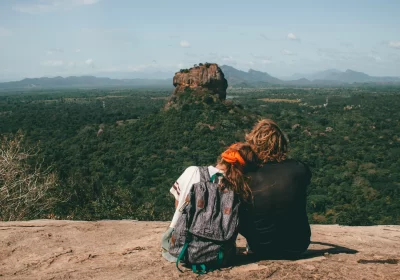
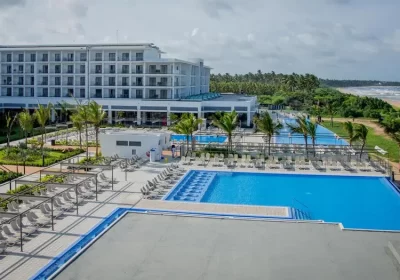
No Comment! Be the first one.